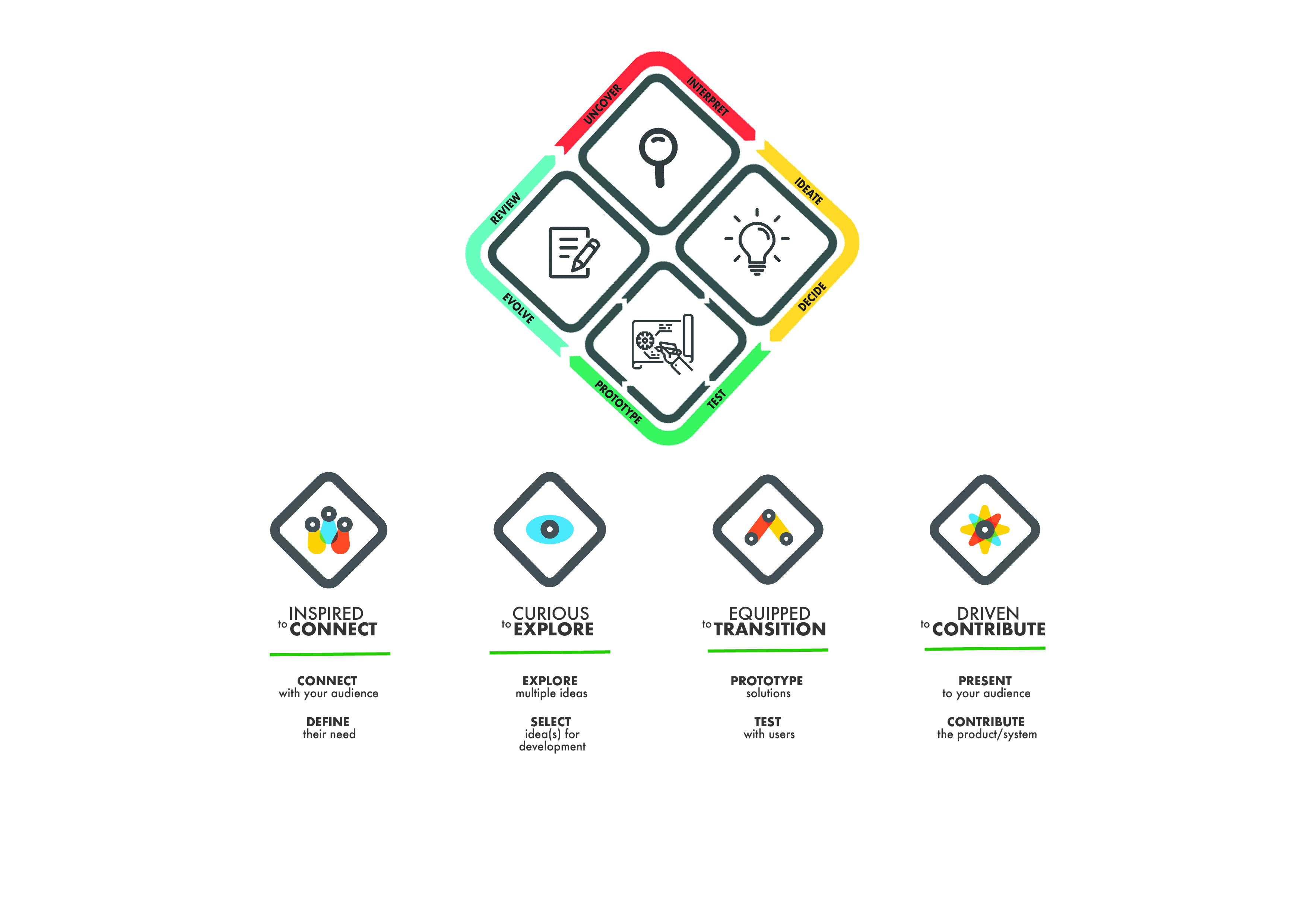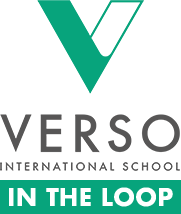Making Students Future Ready Through Design Thinking
Simply put, ‘design thinking’ is a thought process. While it has been practiced for quite some time, its popularity in other industries outside of design has been largely attributed to the design firm IDEO. Used as a process for researching, ideating (idea generation), prototyping/testing and feedback/review, IDEO took business partners on the journey a designer would take to solve problems and/or approach projects. The popularity that this process has gained is due to its holistic and scalable approach to a variety of topics which often brought ingenuity and innovation. When practiced by other industries some things may change such as terminology, order of process, its scale in use, or how to explain the process, but whether used for product designs, identity development, or system strategies, design thinking will have practicing individuals considering:
- the ‘why’ by seeking an understanding in context (of history and humanities, through research/insights, audiences, etc),
- the ‘what’ by exploring possibilities (through creativity, ideas, the arts),
- the ‘how’ by determining feasibility (through prototyping, with engineering, science, math, etc.),
- and it (why, what, how) all again by revising and improving (on presentation and communication, through feedback, critique, etc.).
Families show a growing interest in having their learners demonstrate the ability to creatively approach and solve problems. Naturally, design thinking can support this in the classroom, bringing about its wider adoption in education. Within a curriculum, the design thinking process is no different than industry (1- research, 2- ideate, 3- prototype/test, and 4- review/revise). However, to get better at design thinking, a learner must practice and challenge their process consistently which requires an alternative approach to learning: Project/Problem Based Learning (PBL). Only through the use of design thinking and the feedback received around their process can learners identify more strategies and nuances that may support them in creativity and problem solving.
At VERSO International School in Bangkok we use PBL to facilitate the development of our learners’ design thinking process. By making it the key element to our pedagogical and curricular approach, VERSO puts emphasis on learners’ process while crafting unique projects/problems for learners to give context and application both to content and process. A VERSO learner follows these steps in their design thinking process:
- Uncover & Interpret - Learners gather, organize and interpret information to support their direction
- Ideate & Decide - Learners use insights to help generate ideas/solutions and while making informed decisions on most relevant ideas to proceed with
- Prototype & Test - Learners create prototypes to test various features of their ideas to further gather information to inform their next move (this may sometimes mean uncovering & interpreting the information gathered to reinform ideating & decision making)
- Review & Evolve - Learners share to an authentic audience (relevant to the topic) to seek feedback on how they can improve in various manners (whether in presenting work, their process, their ideas, etc.)
.jpg?width=3509&name=design%20thinking%20+%20mindsets%20%20(1).jpg)
An example of this that took place recently was within our Upper Loop, our international high school . In the Learning Lab project “No Planet B”, learners engaged with discovering the various topics (causes, effects, solutions) of global climate warning. Learners were challenged to explore possible positive affirmative action that the VERSO community can take to contribute to the health of our planet as they explored the discipline of Humanities through Contemporary Problems and an Introduction to Social Impact.
“No Planet B” Learners gathering information on sustainability from members of the BTS Group.
In this project, learners first focused on gathering research around the variety of climate issues and their causes before narrowing down on a focus. Their final solution was the task of developing a fully matured action plan which they will present to the Board of Directors at VERSO with the intention of adoption by the school. This required exploration in presentation format which they ideated around before performing several mock presentations to gather feedback and evolve their pitch before the final. This project acts as a possible initial step into how VERSO can contribute to greener initiatives or climate awareness in Thailand but also for learners to get an opportunity to exercise their process through the development of a robust proposal.
“Cultivating Change” Learners putting on a coat of varnish to the frame of “Woody”, their designed hydroponics system.
In another example, the Learning Lab, “Cultivating Change” had learners ideate and design a closed farming system to grow food. Learners were tasked with exploring alternative agricultural solutions in an urbanizing Thailand. Learners first researched and analyzed natural and human-made systems involved in metropolitan cities before collaborating and creating a farming system best suitable in addressing their identified problems. As they sought out feedback, they reached out to local agriculture groups, alternative farming businesses which included hydroponic shops, restaurants, etc. With this information they worked to build and revise their idea, producing a hydroponics system named “Woody” that will be installed in the Upper Loop as a test to produce vegetables that would be distributed to the VERSO community.
Other explorations for learners included Toy Design, Sculpture, and alternative food science and more where they tapped into a variety of disciplines including the arts, English, physics, and others. But regardless of discipline, the process remains similar. Through consistent exploration, experimentation and feedback gathering of a learner’s individual Design Thinking process, they will grow in their ability to creatively approach and solve problems.









